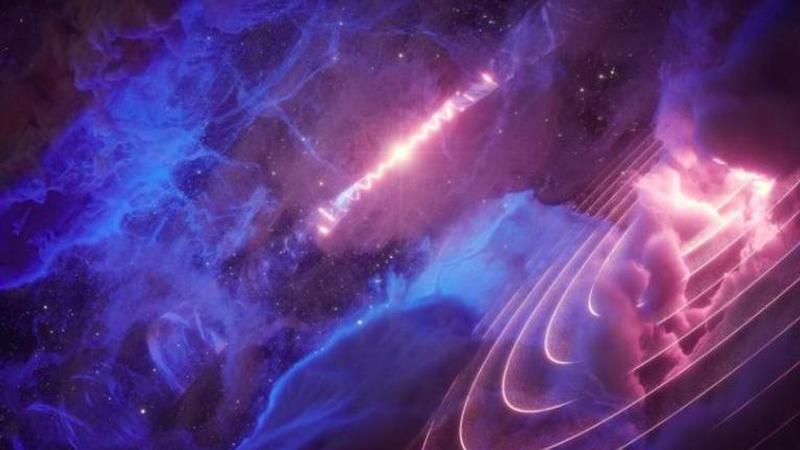Published 15:25 IST, August 19th 2020
Scientists detect Gamma ray 'heartbeat' coming from gas cloud in sync with Black Hole
Termed as SS 433, the phenomenon was discovered post 10 years of data research from NASA's Fermi gamma-ray space telescope by scientists.

A mysterious gamma-ray ‘heartbeat’ coming from a cosmic gas cloud in the constellation Aquila beating in sync with the rhythm of a neighbouring black hole has left the scientists astonished. According to the discovery made by the team led by DESY Humboldt Fellow Jian Li and ICREA Professor Diego F. Torres from the Institute of Space Sciences (IEEC-CSIC), at a 100 light-years, a black hole was powering the gigantic gas cloud’s heartbeat. The first-ever connection between a black hole and the mysterious "heartbeat" of the cosmic cloud published in the Journal Nature Astronomy, is sending researchers in a shock.
Termed as SS 433, the phenomenon was discovered post 10 years of data research from NASA's Fermi gamma-ray space telescope by a team, comprising scientists from Germany, Spain, China, and the US. Researchers thoroughly studied the so-called microquasar. They found that the SS 433 was occurring 15 000 lightyears away in the Milky Way. Further, they found that a mammoth star 30 times the mass of our sun and a black hole with about 10 to 20 solar masses was orbiting around the black hole that consumed its matter for a period of thirteen days.
The accretion disc does not lie exactly in the plane of the orbit of the two objects. It precesses, or sways, like a spinning top that has been set up slanted on a table, Scientist Torres said in the paper. As a consequence, the two jets spiral into the surrounding space, rather than just forming a straight line.
[Gamma Ray Burst. Credit: NASA/Swift/Stefan Immler, et al.]
[ Gamma-Ray burst. Credit: NASA/DOE/Fermi LAT Collaboration, CXC/SAO/JPL-Caltech/Steward/O. Krause et al., and NRAO/AUI]
Scientist Jian Li explained, saying, “a part of that matter does not fall down the drain but shoots out at high speed in two narrow jets in opposite directions above and below the rotating accretion disk.” He elaborated on the phenomenon mentioning that the gigantic star’s material “accumulates in an accretion disc before falling into the black hole, like water in the whirl above the drain of a bathtub.” The setting in which the phenomenon occurred was known by the scientific community as quasars. But SS 433 looked like a milder version of it, with exception of black holes with millions of solar masses spiralling the thousands of lightyears.
And it is certain to provide a testbed for our ideas on cosmic-ray production and propagation near micro quasars for years to come— DESY Humboldt Fellow Jian Li said in the research.
“Finding such an unambiguous connection via timing, about 100 light-years away from the microquasar, not even along the direction of the jets is as unexpected as amazing,” said Li in the research. “But how the black hole can power the gas cloud’s heartbeat is unclear to us,” he added. As per the scientists, the high accelerating and ultra-strong magnetic fields particles produce X-rays and gamma rays. These gamma-ray signals were found to be located at the position of an unremarkable gas enhancement away from black hole’s jets or micro quasar’s jets termed as Fermi J1913+0515 by the researchers. Cloud’s phenomenon was powered by the microquasar.
[The microquasar SS 433 (background) sways with a period of 162 days. Credit: DESY, Science Communication Lab/ Nature Astronomy Journal]
Internet on a comical note said "It's Galactus"
However, according to scientists, further observations and theoretical work were required to fully explain the heartbeat in depth. Internet received the ground-breaking discovery on a lighter note as they suspected the Marvel Comics, Galactus, appeared in the 2007 film Fantastic Four: Rise of the Silver Surfer as a cosmic hurricane-like cloud to have been found. A string of comical reactions flooded Twitter.
Updated 15:24 IST, August 19th 2020













